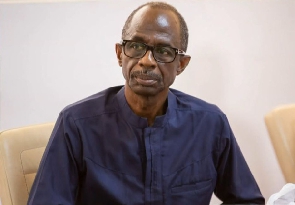Business News of Tuesday, 24 April 2018
Source: www.ghanaweb.com
Satellite TV: Ghanaian market most promising in Africa – SES Satellite
With digitalisation as a key focus and a national priority, Vice President, Marketing of satellite operating company SES, Paul Freeman, says he sees a potential digitization market upsurge in Africa.
Paul Freeman was speaking at the launch of the 2017 Satellite Monitor Study Report which provided insights on Ghana’s broadcasting landscape, the importance of satellite for TV delivery, video trends in the Ghanaian market, as well as the SES reach in the country.
With over 3,000 interviews conducted for this study in 2017, the satellite operator doubled its market reach to 4 million TV homes as compared to 2 million in 2015.
According to the expert, although Ghana is not digitizing any slower than other African countries, SES noticed a big development in the span of four years; that is between the year 2014 and 2017.
He said, “From a pure data point of view, which market in Africa has the highest penetration market of TV homes in terms of percentage.”
He lauded the local team who liaised between SES and customers for ensuring the progress of the Ghanaian market television.
“The Ghanaian market has adapted very quickly and successfully in satellite television. So the team here has done well working with the customers here to develop the Ghanaian market television,” Mr Freeman stated.
He added that the investment by SES made into Ghana is to “support our customers with developing and delivering services into the market.”
Meanwhile, the Deputy Minister of Communications, George Nenyi Andah, disclosed earlier this year that Ghana will experience Digital Terrestrial Television Switch nationwide by Second Quarter of 2018.
He was confident that even though Ghana missed the international deadline of transitioning from analogue to digital terrestrial of 17th June 2015, there is a window of opportunity to conclude all the migration process globally by 2020.











